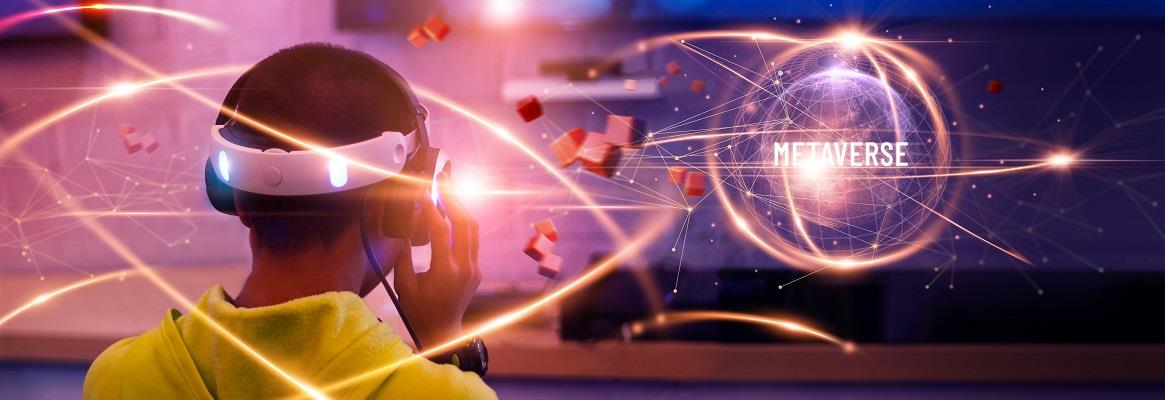For some time, computer specialists and other professionals have been dealing with the new concept called the metaverse. When Facebook decides to change its company name to Meta, it is time for us in the garment industry to take a closer look:
What is the metaverse?
Where did it begin?
How does it relate to the fashion and garment industry?
Where is it now?
Where is it going?
What is the metaverse?
Today we all inhabit two universes: The physical and the virtual (By virtual I mean something that we see but does not actually physically exist). We look at these as two separate entities, although we move freely between the two. For example, David Birnbaum exists in the physical universe where I work, eat, sleep, etc. However, when I play the latest VR game and put on my meta-helmet, I leave the physical and move to the virtual universe where David Birnbaum becomes David Birnbaum AVATAR who exists only in the virtual world. The metaverse is a process to bring the two universes together.

If this sounds reminiscent of Star Trek, it might be because much of what we take for granted today first appeared in Star Trek.
Where did it begin?
To put it another way, when did we move from physical to virtual?
Think of a Zoom call, where a group of people at different locations come together to hold a meeting. To my mind this is not part of the virtual world because each participant is still operating in their own office in the physical universe. However, the move from the physical to the virtual will be when participants’ avatars sit around a table in a virtual conference room.
Clearly, the metaverse as it exists today is but a first step and will grow well beyond VR games or Zoom conference calls.
The metaverse is the merging together of, what up-to-now, has been a two-part process:
• The move from physical to virtual
• The move from virtual to physical

The move from physical to virtual has made substantial progress. Today, the metaverse has become a very important marketing tool.
How does it relate to the fashion and garment industry?
We have internet showrooms, where potential consumers can view computer generated photographs of specific styles that can rotate 360o. That is the virtual universe, but only in its most basic form.
We have the technology to lead our industry much further into the metaverse.
Imagine, you go into a store and see a garment you like. You go to the salesperson and ask, “Do you have this garment in my size in blue?” To which the salesperson replies, “Yes, we have that garment in every size and every colour.” The salesperson is not talking about 10 sizes in 5 colours, but 10,000,000 sizes in thousands of colours.
Here is the process.
The role of the consumer:
• Consumer selects styles.
• Consumer goes to the computer terminal to select the print design and colour.
• Consumer receives a computer-generated series of photographs of themselves wearing each selected style.
• Consumer places order.
• Consumer enters 3D measurement booth. Receives 8-digit size number.
The role of the retailer/factory:
• 8-digit size sent to 3D computerised patternmaker.
• Digital printer produces required print.
• On demand computerised operation cuts each garment individually.
• Micro-factory capable of producing single piece order makes the actual garment.

The computer-generated photo, fabric printing, 3D measurement, patternmaking produced digitally. Nobody actually took a photo. Nobody cut a screen or made the print. Nobody measured the consumer or created a spec-sheet. Nobody cut the pattern. These were all produced virtually.
Of course, the consumer who selected the style and the print operated in the physical world as did the people who actually made the garment.
However, we have the technology to go much further.
Imagine, you are a VR game superstar. You want to design your own AVATAR costume collection. Any reasonably qualified player can use existing technology for virtual clothing design.
These are but a very few examples. However, the metaverse’s move from physical to virtual is very much a work-in-progress. We still have problems to solve.
We are yet to reach the point where computer-generated patterns can equal in standard and fit the work carried out by trained, experienced patternmakers.
While the capital costs for the machinery and programs are becoming more reasonable, the cost of the garment remains uncompetitive except in the very expensive designer sector.
Greater training is required, and industry professionals lack the knowledge necessary to make the best use of the new technology.
The metaverse move from physical to virtual is in its earliest stages but we are moving in the right direction.
The more difficult problem lies in the other direction.

The metaverse works well when our superstar markets and sells designs to avatars in the virtual universe and receives payment in the physical.
The problem occurs when our computer-game superstar finds a market for his/her new designs outside the virtual and wants to retail the clothing in the physical universe.
That is where our superstar will face some very difficult obstacles.
The designer operating in the virtual universe operates with zero rules. Not so the designer in the physical universe.
• He/she must deal with drape and other material considerations.
• He/she must also ensure that the garment can be produced.
• There are problems of costs.
The truth is that in the physical universe design is not a free-for-all where anything goes but rather a sophisticated process requiring educated and experienced craftspeople.
Marketing the superstar’s designs in the virtual universe presents few, if any, problems. However, moving from the virtual to the physical presents what currently appears to be insurmountable obstacles. Indeed, the only way forward is for the superstar designer to leave the virtual and return to the physical where he/she can work with professionals with the necessary knowledge and experience.
The way forward
The metaverse — the merging of the virtual and physical universes — is technology-based, where the virtual world is digitised, computerised and most importantly based on AI. Indeed, each step forward in the metaverse requires further AI development.

However, there is a viable alternative to the metaverse, based on the same underlying concept — the merging of the virtual and physical universes. This alternative has been with us since the beginning of time. It is inherent in each one of us.

We have always been inhabitants of the virtual universe because we all dream and have new ideas. This is creativity.
The manifestation of creativity— the move from the virtual to the physical — is talent whereby the idea becomes a piece of music, a painting, a new understanding of the cosmology or the latest t-shirt design.
In the pre-metaverse era, the move from virtual to physical was very difficult, almost impossible because there was no vehicle to make the move. In the past, some people in Ghanaian villages had revolutionary new mathematical concept or some Lao woman had the ability to write great music, design new structures, etc. These and countless others were lost for all times. But today, metaverse can offer everyone, everywhere the opportunity to move from the virtual to the physical.
There is one final point, which may be the great debate of our times. We are in the midst of a competition between the metaverse and the natural world, to determine where future development lies.
Will AI reach the point when it becomes more innovative, more inventive, more creative than people or remain simply an important tool of creative people?









Comments